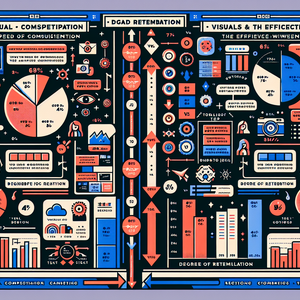The Gig Economy's Gender Pay Gap: Uber Drivers Under the Lens

Data from various studies reveals a stark disparity in earnings between male and female Uber drivers. Research indicates that male drivers earn, on average, 15-20% more than female drivers. This gap is not unique to Uber; it reflects a broader trend within the gig economy, where women frequently earn less than men for similar work. For instance, a survey conducted by the Economic Policy Institute found that women in gig roles are often subjected to wage penalties compared to their male peers, a trend mirrored in the ridesharing sector. Factors contributing to this disparity include the total hours worked, the choice of driving locations, and the acceptance of longer or less desirable rides. Male drivers are statistically more likely to drive at peak hours or accept longer trips that yield higher fares, while female drivers may prioritize safety and convenience, often opting for shorter rides or avoiding high-demand times altogether.
Personal Stories: Voices from the Drivers
To gain a deeper understanding of the gender pay gap among Uber drivers, we spoke with several female drivers who shared their experiences and insights. Maria, a part-time driver in Los Angeles, expressed her frustration with the earnings gap. "Despite enjoying the flexibility of ridesharing, I often feel pressured to drive longer hours during peak times just to match what my male colleagues earn," she stated. "There are days when I put in extra effort but still fall short of their earnings." Sarah, who drives in Chicago, highlighted the impact of safety concerns on her income. "I have to be more cautious about the areas I drive in, which sometimes limits my opportunities for higher fares," she explained. "Men seem more willing to take risks in less safe areas, which can lead to higher earnings." These personal narratives illustrate the intricate social and economic challenges that female Uber drivers face, shedding light on the motivations behind the statistics.
The Systemic Factors at Play
The gender pay gap among Uber drivers is shaped by systemic issues that extend beyond individual choices. One of the primary factors is the differing driving patterns adopted by male and female drivers. Research indicates that male drivers are more likely to accept longer rides and work during high-demand hours, often yielding higher earnings. In contrast, safety concerns often lead women to choose shorter rides or avoid late-night driving, thus limiting their earning potential. Social norms and expectations also play a significant role. Many female drivers juggle multiple responsibilities, including childcare and household duties, which can restrict their availability to drive. This reality not only affects their immediate earnings but perpetuates a cycle of economic disparity that can be difficult to break. Moreover, the ridesharing industry suffers from a lack of transparency around pay structures and incentives. Without clear information on how to maximize earnings or access to mentorship, many female drivers may struggle to navigate the complexities of the platform effectively, further exacerbating the gender pay gap.
The gender pay gap among Uber drivers serves as a microcosm of broader societal issues within the gig economy. By examining the statistics, personal experiences, and systemic factors at play, it becomes clear that addressing this disparity requires a multifaceted approach. Initiatives aimed at increasing transparency in pay structures, providing targeted support and resources for female drivers, and fostering a more inclusive driving environment can help bridge the gap. As the gig economy continues to evolve, advocating for equitable opportunities for all drivers, regardless of gender, is crucial. By illuminating these disparities, we can begin to cultivate a more just and fair ridesharing industry, ensuring that all drivers have the opportunity to succeed and thrive. Addressing the gender pay gap is not just a matter of equity; it is essential for fostering a sustainable and inclusive future for the gig economy.
Data Analyst - Gig Economy Trends
Research institutions, economic think tanks, and policy advocacy organizations
Core Responsibilities
Analyze large datasets to identify trends in earnings among gig workers, with a focus on gender disparities.
Create visualizations and reports to communicate insights to stakeholders and policymakers.
Required Skills
Proficiency in data analysis tools (e.g., SQL, Python, R) and data visualization software (e.g., Tableau).
Strong understanding of statistical methods and their application in labor economics.
Equity and Inclusion Program Manager
Nonprofit organizations, social enterprises, and corporations focused on corporate social responsibility
Core Responsibilities
Develop and implement programs aimed at promoting gender equity and diversity within gig economy platforms.
Collaborate with internal teams and external partners to address systemic barriers affecting female gig workers.
Required Skills
Experience in program management and a background in social justice or community engagement.
Strong communication and negotiation skills to advocate for policy changes.
Rideshare Operations Manager
Ridesharing companies like Uber, Lyft, and other mobility service platforms
Core Responsibilities
Oversee daily operations of ridesharing services, ensuring efficient driver allocation and customer satisfaction.
Analyze operational data to improve service delivery and address gender disparities in driver performance.
Required Skills
Strong analytical skills and experience in operations management within transportation or logistics.
Familiarity with rideshare platform algorithms and driver engagement strategies.
Transportation Policy Analyst
Government agencies, think tanks, and advocacy groups focused on transportation and labor rights
Core Responsibilities
Conduct research on transportation policies affecting gig economy workers, focusing on equity and access.
Prepare policy recommendations to improve the economic conditions for female drivers in ridesharing.
Required Skills
Strong analytical and writing skills, with experience in policy analysis and advocacy.
Knowledge of transportation systems and labor market dynamics.
UX Researcher - Ridesharing Applications
Technology companies in the ridesharing sector, UX consulting firms, and design agencies
Core Responsibilities
Conduct user research to understand the experiences of female drivers and passengers on ridesharing platforms.
Collaborate with design teams to create user-centered solutions that enhance safety and earnings for female drivers.
Required Skills
Experience in qualitative and quantitative research methods, including interviews and usability testing.
Strong communication skills to present findings and advocate for user needs in product development.


